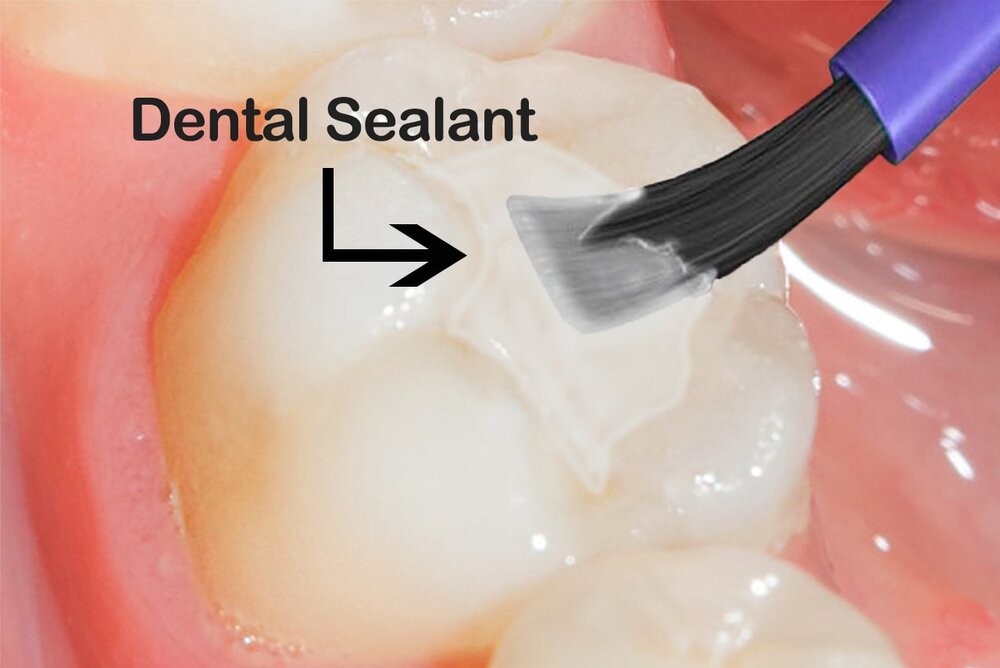 For the past 50 years Pediatric Dentists have been applying dental sealants to prevent the most common kind of cavity on permanent teeth. Sealants are a thin plastic coating that is painted on the tooth surface to fill the grooves and pits. These grooves and pits are so small and deep, that even a toothbrush bristle can’t fit in to clean out these pits. For most children, it is virtually inevitable, that without the protection provided by sealants, they will get cavities in these grooves and pits. The coating is light hardened to protect the tooth surface from decay. The coating can be clear, white or slightly tinted, but is virtually impossible to see because of its placement on the back molars. Sealants are a great option for the prevention of dental caries because they act as a physical barrier to decay. The protection is determined by the sealants´ ability to adhere to the tooth.
For the past 50 years Pediatric Dentists have been applying dental sealants to prevent the most common kind of cavity on permanent teeth. Sealants are a thin plastic coating that is painted on the tooth surface to fill the grooves and pits. These grooves and pits are so small and deep, that even a toothbrush bristle can’t fit in to clean out these pits. For most children, it is virtually inevitable, that without the protection provided by sealants, they will get cavities in these grooves and pits. The coating is light hardened to protect the tooth surface from decay. The coating can be clear, white or slightly tinted, but is virtually impossible to see because of its placement on the back molars. Sealants are a great option for the prevention of dental caries because they act as a physical barrier to decay. The protection is determined by the sealants´ ability to adhere to the tooth.
What is the process for sealants?
The surface of the tooth to be sealed is cleaned and rinsed to make sure that it is free of any food debris. Then a special cleansing liquid is painted onto the tooth and then washed away. While the tooth is kept dry, a sealant is applied, usually on the chewing surface of the back teeth, and then light cured, until it hardens.
It’s as simple as painting on the sealant or squirting it onto the biting surface of a back tooth.
The procedure is pain-free and takes about 3 minutes per tooth. At your child’s regular cleaning visits your dentist or hygienist will always check the integrity of their sealants and will perform any maintenance, as necessary to ensure that your child receives the full protection that a sealant is capable of providing.
Sealants have had an incredible impact on lowering the decay rate and have been shown to be a safe and cost-effective technique to help eliminate the most common form of dental cavities on permanent teeth. If your dentist does not offer sealants as a preventive measure for your child’s permanent molars, you should ask why it has not been recommended.

Unsealed tooth


Unsealed versus sealed tooth
 Close-up view of grooves and pits of permanent molars
Close-up view of grooves and pits of permanent molars
You can be the best toothbrusher in the world, but our back teeth were designed for them to easily get cavities with modern day diets that don’t have very many coarse foods as were eaten by our very long ago ancestors.
It’s not really about the sugar or the poor oral hygiene, although both can play a role in these unique kind of cavities progressing more quickly once they get started.
With pits and grooves like these, it’s no surprise that cavities used to be inevitable.

Even the smallest toothbrush bristle, as shown here under magnification, just can’t fit into deep pits and grooves
Hits: 2
